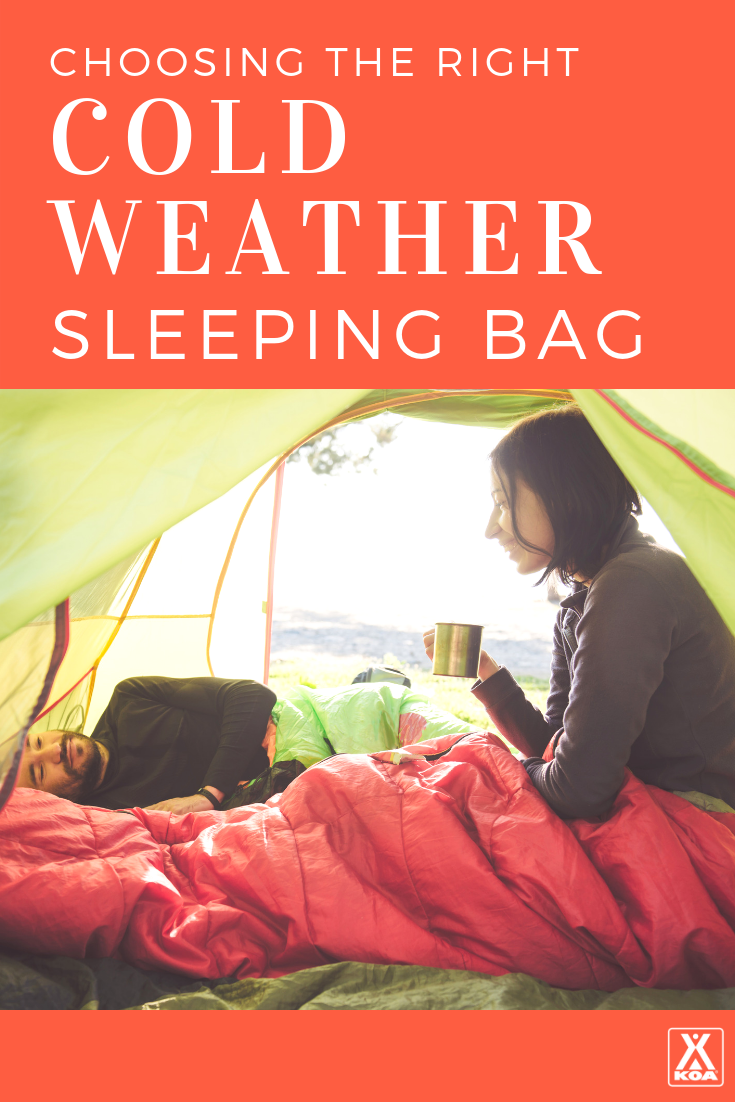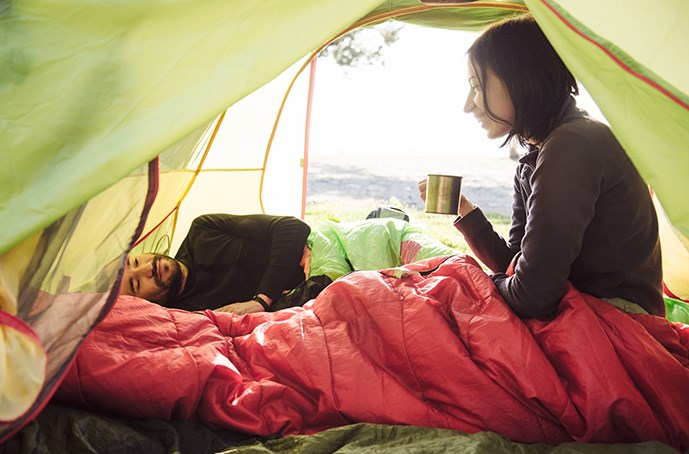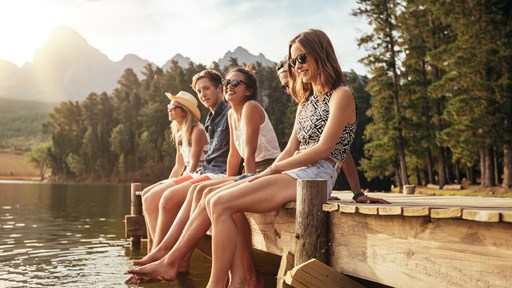Picking the Best Sleeping Bag for Cold Weather Camping
No matter the season, camping is a fun adventure your whole family will love. There’s nothing quite like sleeping outdoors in a tent or cabin. One essential component you don’t want to forget is an appropriate sleeping bag. When you have the right equipment, cooler weather can make for an incredible camping experience. You don’t have to worry as much about bugs or getting overheated on hikes, and the colder seasons are filled with their own wonder and beauty.
Depending on what time of year it is or where you’re camping, chilly weather can impact your ability to get a good night’s sleep if you’re not prepared. That’s why it’s essential to find the best sleeping bag for cold weather conditions. How do you know what to pick? When you visit your local outdoor retailer, there are tons of options — so many that you might feel overwhelmed. Most of the time, the staff will be nearby to answer your questions. However, it’s always a good idea to go in with an inkling of what you want and need for your planned camping trips.
With that in mind, here are some tips for picking out a cold weather sleeping bag.
How to Choose the Best Cold Weather Sleeping Bag
When you’re browsing online or sorting through options at your local camping store, there are so many different kinds of sleeping bags. Some focus on being lightweight, for those avid outdoorsy types who prefer to fit all their gear in one pack. Others are more interested in keeping campers warm and cozy. You may notice that most sleeping bags nowadays showcase a brief description of that particular bag with all its characteristics. Here is your guide on how to translate these features into a comfortable night’s sleep.
1. Look at the Temperature Rating
The temperature rating of a sleeping bag will tell you the lowest temperature at which it will keep you warm. However, these ratings assume you are wearing warm clothes to bed and have also purchased a sleeping pad, which acts as a layer between your sleeping bag and the cold ground. Plus, everyone is different, some getting cold more easily than others. Also, ratings differ from one manufacturer to another. So, this number is not an exact science.
Still, a good rule of thumb when considering a bag’s temperature rating is this:
- Summer Temperature Rating: +35° Fahrenheit or higher
- Spring and Fall Temperature Rating: +10 to +35° Fahrenheit
- Winter Temperature Rating: +10° Fahrenheit or lower
2. Consider the Material Used for Insulation
When checking out sleeping bags, you’ll notice there are three main types of material used as insulation. Each has their advantages and disadvantages. Common insulation materials include:
- Synthetic: Generally made from polyester, synthetic insulation keeps you warm while saving you some money. Even if it gets damp, it will continue working. Synthetic sleeping bag insulation material is also relatively durable and hypoallergenic. Unfortunately, it’s a little bulkier and harder to transport, as it doesn’t pack down as small as other options.
- Goose-Down: This option is a little more pricey, but many campers love it because it tends to be warmer and more durable than synthetic insulation. You can also easily compress it down into a small pack. Beware if it gets wet, however, as it loses its insulating ability.
- Water-Resistant Down: These are goose-down sleeping bags that have been treated to protect the feathers against the effects of moisture. This is probably your most expensive option, but it combines the portability of down with the benefits of staying warm even if your sleeping bag gets damp.
3. Choose Additional Features for Added Warmth
Other features influence how warm a sleeping bag keeps you. So, before you hit that purchase button or check out at the store, here are some additional characteristics you may want to consider:
- Shape: Sleeping bags keep you warm by trapping a layer of heated air around your body. The less space there is, the faster you can warm up and stay warm. The shape of a sleeping bag can either help with this process or hinder it. Roomier sleeping bags, like rectangular or barrel-shaped, give you more room to wiggle, but may not keep you as warm. Mummy-shaped bags, on the other hand, are more restrictive but are great for colder climates.
- Hood: You lose a lot of heat through an uncovered head. Some sleeping bags come with a built-in hood with a drawcord, keeping your head nice and warm, along with the other parts of your body.
- Shell and Lining: The outside material of your sleeping bag is called the shell, while the inside material is the lining. A shell made with a water repellent finish will ensure cold water doesn’t soak into the fabric. The lining, on the other hand, should disperse your body’s moisture during the night.
- Pillow Pocket: Certain sleeping bags have a small pocket that you can convert into a pillow. Just stuff some soft clothes inside, and you have not only the comfort a pillow provides, but also some added warmth for your head.
Plan Your Next Camping Trip at KOA
Camping at KOA means a great experience, no matter what time of year. From Tent Sites to lodging options like Camping Cabins, your whole family can enjoy all the excitement of the great outdoors combined with the convenient amenities you’ll only find at a KOA campground. Go ahead and plan your cold weather getaway and make your reservation at KOA today.


























